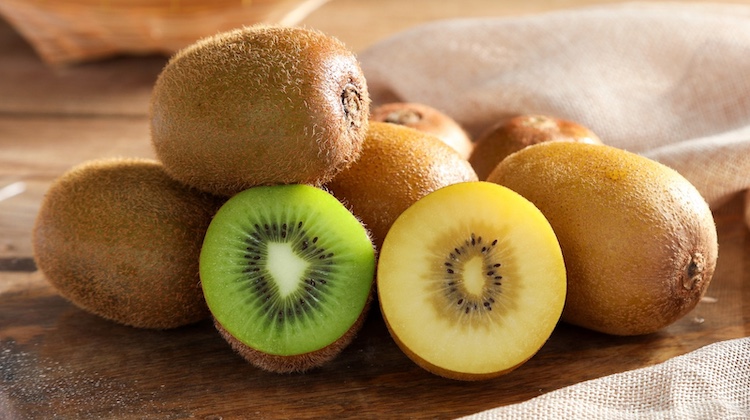
What do you do when life gives you 50,000 tons of rejected kiwifruit? If you’re Shelley Houston, you turn it into automotive-grade faux leather.
The founder of KiwiLeather Innovations has been on quite the journey since her son started bringing home buckets of “ugly” kiwifruit from his orchard job four years ago. What began as a frustrating abundance of fruit that wouldn’t sell has evolved into a groundbreaking business that’s catching the attention of automotive manufacturers looking for sustainable interior materials.
When Baking Isn’t Enough
Houston’s story starts in Papamoa, where she found herself drowning in discarded golden kiwifruit. “I used to be quite a keen baker, but I found there’s only so much baking you can do with kiwifruit,” she told RNZ.
The scale of the waste problem was eye-opening. New Zealand throws away over 50,000 tons of kiwifruit annually – fruit that doesn’t meet the stringent export standards but is perfectly good otherwise. While some goes to farmers for stock feed, Houston saw an opportunity to create something entirely different.
Looking to Europe for inspiration, where companies were already transforming mangoes, apples, and grapes into biomaterials, Houston decided to experiment. “I thought I’d give it a go with kiwifruit,” she says. The results surprised even her.
The Science Behind the Material
Working with Scion research, Houston has perfected a formula that transforms kiwifruit waste into what she calls a leather alternative that’s “over 90% plant and bio-based, completely plastic-free.”
The material is not just sustainable – it’s surprisingly durable, she says. According to KiwiLeather Innovations’ tests, it can withstand the wear and tear of automotive applications.
Targeting the Car Industry
Houston has her sights set on the automotive sector, where companies are increasingly seeking sustainable alternatives to traditional leather interiors. She points to cactus leather as evidence of the industry’s appetite for plant-based materials.
The timing couldn’t be better. As consumers become more environmentally conscious and regulations push for greener manufacturing, automakers are scrambling to find bio-based materials that don’t compromise on quality or aesthetics. “There’s just not enough product out there, enough bio-materials for these companies to be able to create that sort of thing,” Houston explains.
A Win-Win for Growers
KiwiLeather Innovations has partnered with multiple packhouses to source their rejected fruit, creating additional revenue streams for growers while solving a waste problem. “It was good to give growers more value while repurposing the byproduct,” Houston says.
This circular economy approach addresses multiple challenges at once: reducing agricultural waste, cutting greenhouse gas emissions from food decomposition, supporting local farmers, and meeting the growing demand for sustainable materials.
What’s Next?
Houston is promising prototype products in the coming months, though she’s keeping details close to her chest about which automotive partners might be first to test the material. The company positions itself as “a leader in sustainable practices” with a focus on local sourcing and production that minimizes transportation emissions.
The broader alternative leather market is heating up, with everything from mushroom mycelium to lab-grown materials competing for market share. But KiwiLeather Innovations has a unique advantage: an abundant local waste stream and a product that leverages New Zealand’s agricultural expertise.
The challenge now will be scaling production to meet potential demand. While the prototype phase looks promising, moving from lab samples to commercial production that can supply major automakers is a different beast entirely.
Houston remains optimistic about the timeline, though she acknowledges the road ahead will be quite tough. For now, she’s focused on getting those first prototypes into the hands of potential customers and letting the material speak for itself.
Recent Comments